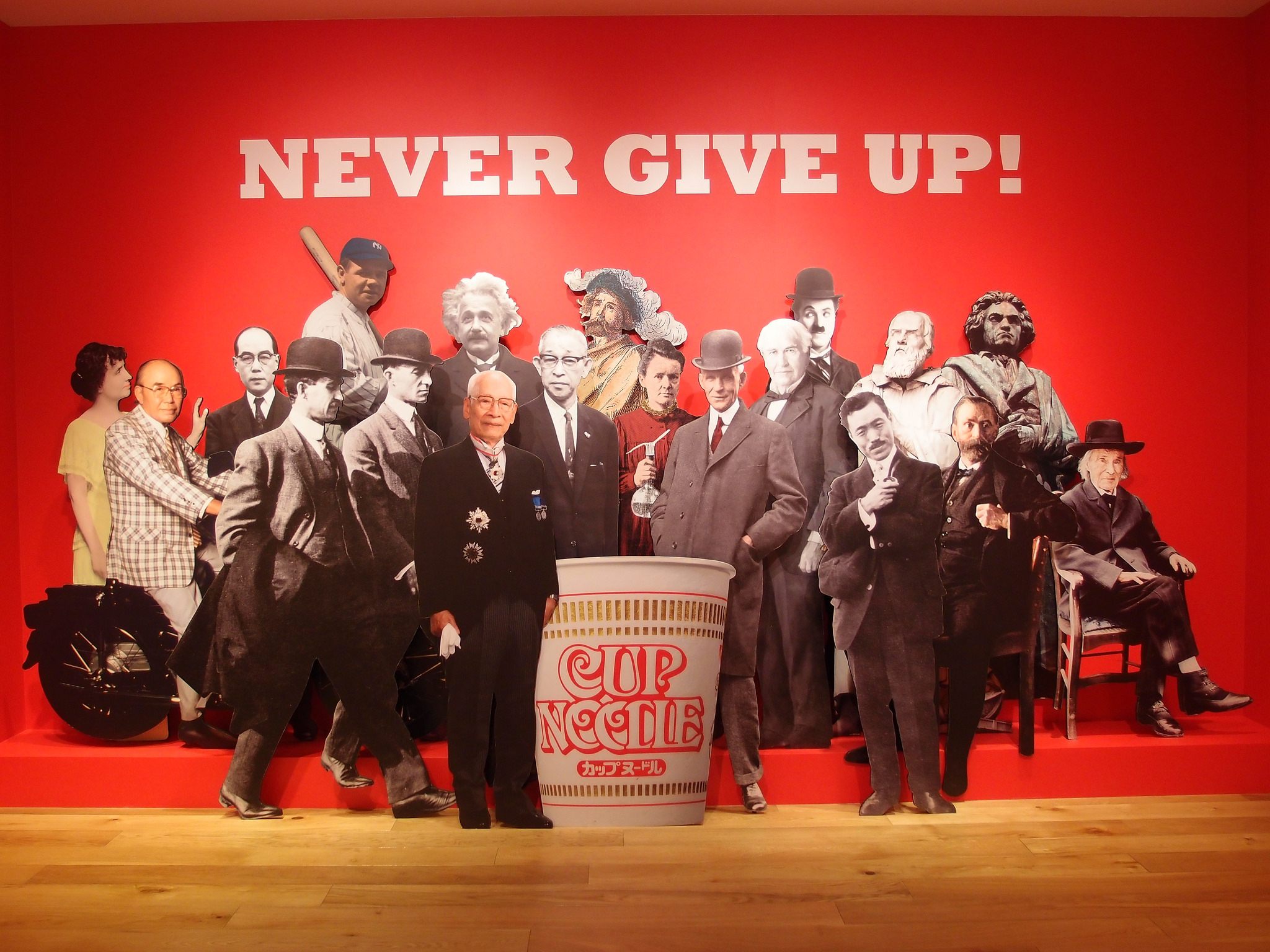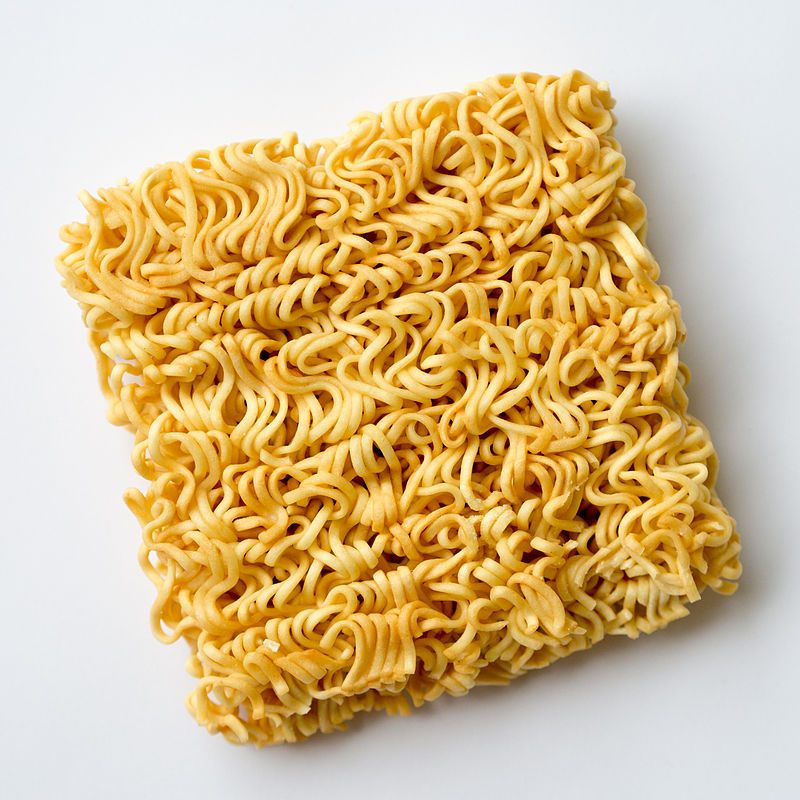Meet the Association Upholding the Integrity of Instant Noodles
If you’ve ever lived off ramen, you can thank the global organization that keeps it coming.

Ramen heaven. (Photo: BrokenSphere/CC BY-SA 3.0)
For anyone who has gotten through a frugal time by eating instant ramen noodles, you have have one man to thank for your continued survival: Momofuku Ando.
In the 1970s, the father of the instant noodle—and the namesake of the New York restaurant chain Momofuku—helped turn what was a distinctly Asian staple food into a cornerstone of the global food industry. He then went on to establish the World Instant Noodles Association (WINA), an organization that makes sure the quality of instant noodles around the world is maintained and that when someone peels back the lid of a Cup Noodle, or opens a packet of Top Ramen, they know what they’re in for.
“Instant noodles’ unique adoptability and versatility helped the product grow to a global food,” says Norio Sakurai, the current Deputy Chief Executive of WINA. But the instant noodle as we recognize it today was first invented by Ando in the 1950s.
After World War II, Japan was facing a national food shortage, and received aid from the United States in the form of wheat flour, a grain that was theretofore not popularly used by the Japanese. The Japanese government encouraged the people to use the flour to make bread for meals, but after seeing a long line of hungry people at a fresh ramen stand, the pragmatic Ando had a better idea. He suggested that the wheat flour be used to make noodles, which the populace was much more familiar with, but his idea was initially criticized because the noodle industry was not robust enough to keep the entire country fed.
So he revolutionized it.

Momofuku Ando among other historic greats in an exhibit in the Cup Noodle museum. (Photo: Guilhem Vellut/CC BY 2.0)
After a year of trying to develop his own system, the story goes that he stumbled upon his method of flash-frying the noodles when, on a whim, he added some to the tempura oil his wife was using to make their dinner. Ando released the first pre-cooked instant noodle, Chikin Ramen in 1958. Containing a noodle block with the flavoring already held within the noodles, the product became, pun so very intended, an almost instant hit. While Chikin Ramen was initially seen as a luxury item, costing more than a bowl of prepared soup at the time, it quickly became a staple in Japan thanks to its ease of preparation.
As the popularity of Ando’s instant ramen soared, he created a truly historic industry with his invention of cup noodles in 1971. By containing the noodles and seasoning in their own waterproof container, Ando was more easily able to get instant noodles to appeal to international markets. Now, the noodles didn’t even really need to be cooked, making the product much more universal. With Cup Noodles, Ando’s dream of a global instant noodle empire quickly became a reality.
As the market exploded, countless other manufacturers in addition to Ando’s company, Nissin, got in on the action, making instant noodles available in nearly every country in the world. “The point is that with this core method each country was able to develop its own local flavors reflecting the food culture of the country,” says Sakurai. By the mid-1990s, the people of Earth were consuming around 40 billion instant noodle units a year, and Ando, still caring about the future of his invention, saw the need for a regulatory body that would make sure the instant noodle business didn’t fall victim to poor quality and lack of oversight. “Consequently, International Ramen Manufacturers Association (IRMA), the forerunner of WINA, was formed in 1997.”

Simple, world-shaking, delicious. (Photo: Takeaway/CC BY-SA 3.0)
Ando passed away in 2007 at the age of 96, but not before he got to see his famous food even make it to space when Japanese astronaut, Soichi Noguchi, brought some instant noodles with him on the Discovery spacecraft.
Even after Ando’s death, the industry has only continued to grow, and is now estimated to sell a staggering 100 billion units globally each year, with over half of them being sold in China alone. In his stead, WINA continues to work towards Ando’s dream of bringing delicious instant noodles to the world, by uniting companies across the globe to maintain the quality of the product, no matter where it is. “WINA has a total of 67 instant noodle manufacturers from 21 different countries/regions as its regular members,” says Sakurai. “Besides noodle manufacturers, WINA has approximately 100 associate members, who are engaged in the businesses related to instant noodles such as suppliers of materials.”
While it seems ubiquitous, WINA still uses its global reach to increase awareness of instant noodles, and focus on maintaining food safety standards. Every two years, the organization hosts a World Instant Noodles Summit where manufacturers trade news and innovations. They provide instant noodles to disaster relief efforts (instant noodles are terrific in emergency situations due to their long shelf life and lightweight poundage). Ultimately, WINA makes sure that those packages of ramen maintain their reliable, inexpensive, uniform taste and function, no matter where you are.
Much like Ando, WINA is also constantly looking to the future of instant noodles. According to Sakurai, it could lie in something he calls a nutri-noodle. “Instant noodles have great potential to be a vehicle to supply customized micro-nutrients and functional substances,” he says. In theory, instant noodles could have the ability to be tailored to the specific dietary needs of just about anyone.
Ramen noodles are often taken for granted as a cheap food option, but to people like Momofuku Ando, the gatekeepers at WINA, and the billions of people around the world who eat them regularly, they are the most important meal of the day.
Gastro Obscura covers the world’s most wondrous food and drink.
Sign up for our email, delivered twice a week.
























Follow us on Twitter to get the latest on the world's hidden wonders.
Like us on Facebook to get the latest on the world's hidden wonders.
Follow us on Twitter Like us on Facebook